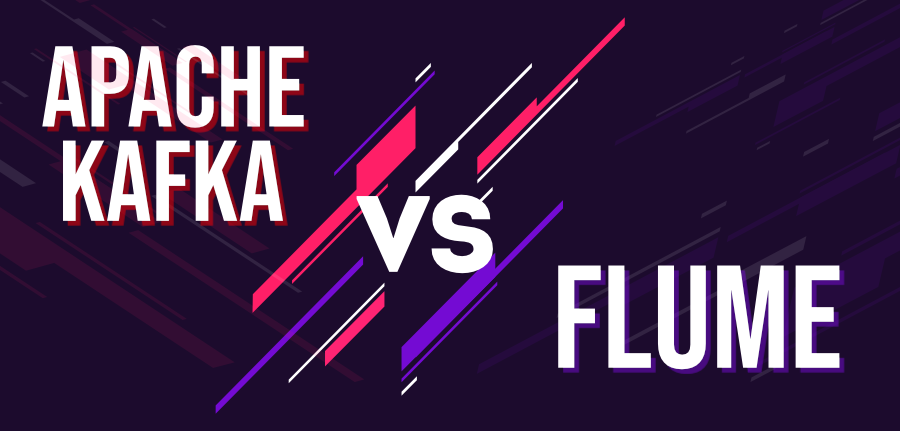
With the volume of data increasing with each passing day, the necessity of newer methods to process data faster, continuous, and in practical ways is also growing. One of the most effective ways of doing so is using Big Data sets and ingestion tools for Hadoop. It helps in capturing the binary streams that are chunks of data generated from specific user actions. The ingestion tool in Hadoop then pushes this data into a continuous stream in all different scales. As companies grow keen towards expanding their foothold across the world, professionals seek Kafka certification and courses for promising opportunities. Let’s have a closer look.
Table of Contents
What is Kafka Framework?
Kafka is a superfast, scalable, robust, and publish-subscribe messaging platform that can help manage massive datasets throughout the day. Developed by LinkedIn, Kafka is known for its real-time data streaming, full-fledged architecture that is used for stream processing, tracking website activity, collecting and monitoring metrics, log aggregation, real-time analytics, etc. Companies, big and small, use Kafka as it comes with ease of usage and simple set up. This framework provides a stable and flexible queue of publish/subscribe, tunable consistencies, and auto-preservation of ordering seamless performance for an abstraction based distributed commit log.
Kafka has a higher throughput and replicating features, thus making it practical to track service calls, IoT sensor data. Brands like Spotify, Netflix, and Cisco use Kafka to make it redundant for its exceptional data streaming expertise.
The entire streaming architecture is the intermediate layer that plays a pivotal role in keeping your data pipelines decoupled and a great feeder of real-time and operational data systems. Kafka feeds on Hadoop, and therefore, streams into your big data platform, from where it can be used for data analysis, reporting, crunching, and auditing. Since used as fault-tolerant storage, Kafka puts IO to operate effectively with batching and compressing data records.
What is Flume Framework?
Flume, on the other hand, is another most dependable, reliable framework that enables data management complete with aggregating, collecting, and moving massive data sets. It also has a similar, collaborative architecture that can be used according to data streams, written in JAVA and its inbuilt query processing machine which transforms each new data batch or data streaming into HDFS. Flume also supports other sources like:
- ‘tail’ (similar to the Unix command) is responsible for sending all the data from the local files to HDFS via Flume
- System logs
- Apache log4j that enabled Java applications for writing files via Flume
One to One Comparision fo Kafka and Flume
| Kafka | Flume |
| Kafka is a well-rounded, robust, and efficient messaging system. | Flume is seen as a service or tool that helps in gathering data for Hadoop. |
| Kafka can run as a cluster that can handle massive datasets in real-time. It has three components – Kafka cluster, manager and subscriber. | Flume runs as a framework that can collect data logs from distributed web servers that get stored into HDFS. |
| Kafka takes each partitioned topic as an ordered dataset and cannot track if the messages are read by the subscribers. Therefore, it can support numerous publishers and subscribers for storing large data amounts. | Flume streams data taken from numerous sources and stores them for further processes in Hadoop. It also ensures that the data delivery takes place at both the ends of the receiver and sender agents. |
| Kafka can help in analyzing data for making it available to numerous subscribers on interests, as well as record aggregation services. | Flume helps in the transaction logs of application servers, web servers, etc. for eCommerce, online retail portals, and others. |
| Kafka requires processing real-time data streams without any data loss and has a redundant, fault-tolerant system. | Flume gathers big data steaming under different batch modes from different sources. |
| Despite Flume and Kafka providing a solid lineup for dataset processing and handling, Kafka is a common data-sharing platform as subscribers and publishers share data numerously. | Flume, on the contrary, is a more focussed data sending tool that allocates data into the HDFS. |
| Kafka isn’t compatible with multiple data stream applications. | Flume is made for Big Data streams on Hadoop and manages big data analysis seamlessly. |
| Kafka is based more on a pull system where there’s a resistance that is met to prevent overflowing consumers. This reverse pressure is created when there’s a temporary storing of incoming messages that get stored till they’re expired. In this way, the following consumers can take time to get their messages. | Flume is more of a push system that shows data loss when the consumers aren’t able to keep up with the pace of receiving incoming messages. Therefore, it is only made to send messages to HDFS and HBase. |
| Kafka would keep data in the storage until a specific time or traffic which can be reassigned multiple times based on the volume of consumer groups as well as create events while not overloading the database. | For adding more consumers to Flume, the topology of its pipeline design needs to be changed as well as it requires replicating the channel, thus requiring a downtime. Since Flume isn’t made for scalability, it might not handle more consumers as efficiently as Kafka. |
| Kafka has an in-built resilience to a case of a node failure, and therefore, has an automatic recovery system in place. | In a scenario of Flume agent failure, you may lose certain events in the channel as a consumer. |
Overall, both the frameworks are excellent tools to have for data streaming and processing under Hadoop and have an out-of-the-box experience. Depending on how you want your data would be consumed, whether you want to extract data or push it into data sinks, your developers might be the right choice for the ingestion tool.






